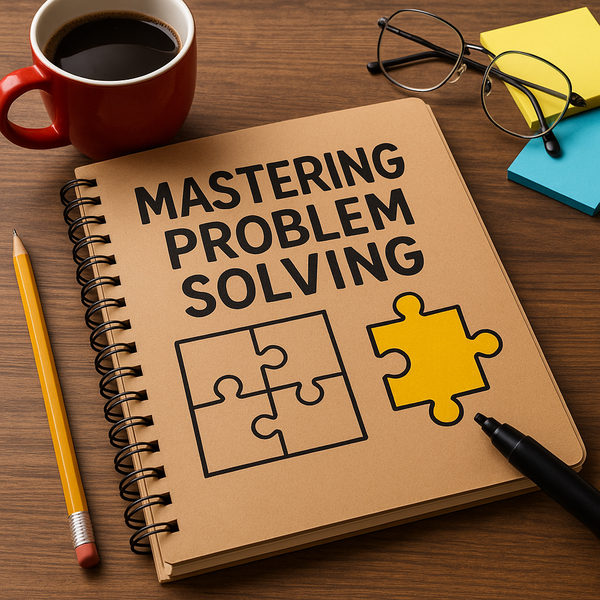
Stuck in a rut or facing a complex challenge? Effective problem-solving is a critical skill in every aspect of life, from personal development to professional success. This guide will equip you with proven strategies to tackle issues head-on, brainstorm innovative solutions, and implement them with confidence, ensuring you can navigate any obstacle.
Understanding the Problem
Before diving into solutions, a deep understanding of the problem itself is paramount. This involves clearly defining the issue, identifying its root causes, and gathering all relevant information. Ask yourself: What exactly is the problem? Who is affected by it? When and where does it occur? What are the contributing factors? Breaking down a complex problem into smaller, manageable parts can make it less daunting. Techniques like the '5 Whys' can help uncover the underlying causes rather than just addressing the symptoms. It's also beneficial to consider the problem from different perspectives. Engaging with others involved or affected by the problem can provide valuable insights and uncover blind spots. Documenting your understanding, perhaps through a problem statement, ensures clarity and provides a solid foundation for the subsequent steps in the problem-solving process. This initial phase is crucial; a poorly defined problem will inevitably lead to ineffective or misdirected solutions.
Brainstorming and Generating Solutions
Once the problem is thoroughly understood, the next step is to generate a wide range of potential solutions. This is where creativity and open-mindedness are key. Employ brainstorming techniques, encouraging the free flow of ideas without immediate judgment. Tools like mind mapping, SCAMPER (Substitute, Combine, Adapt, Modify, Put to another use, Eliminate, Reverse), or simply listing every possible idea can be highly effective. Don't be afraid to think outside the box or consider unconventional approaches. The goal at this stage is quantity and diversity of ideas, not necessarily immediate feasibility. Encourage participation from others to foster a collaborative environment that can spark even more innovative concepts. Prioritize generating as many options as possible before moving to the evaluation phase. This expansive approach increases the likelihood of discovering the most effective and novel solutions.
Evaluating and Selecting the Best Solution
With a pool of potential solutions, the next crucial step is to systematically evaluate them to determine the most viable and effective option. This involves setting clear criteria for success, which might include factors like cost-effectiveness, feasibility, time constraints, potential impact, and alignment with overall goals. Tools like a decision matrix or pros and cons list can be invaluable in this evaluation process. Consider the potential risks and benefits associated with each solution. It’s also important to involve stakeholders in this selection process, as their input can provide valuable perspectives and ensure buy-in for the chosen course of action. Don't just settle for the first seemingly good idea; carefully weigh the merits of each option against your defined criteria. The aim is to choose a solution that not only addresses the problem but also offers the best overall outcome with manageable risks.
Implementing the Solution
Once the optimal solution has been identified, the focus shifts to effective implementation. This requires careful planning, resource allocation, and clear communication. Develop a detailed action plan outlining the steps needed, who is responsible for each task, and the timeline for completion. Ensure that all necessary resources, such as budget, personnel, and tools, are available. Communicate the plan clearly to all involved parties, making sure everyone understands their roles and responsibilities. It’s also wise to anticipate potential obstacles during implementation and develop contingency plans. Regular monitoring and evaluation of progress are essential to ensure the solution is being executed as intended and to make any necessary adjustments along the way. A well-executed implementation is as critical as choosing the right solution.
Monitoring and Reviewing the Outcome
The problem-solving process doesn't end with implementation; continuous monitoring and review are vital to ensure the solution's long-term effectiveness and to learn from the experience. Track the impact of the implemented solution against the initial problem definition and the desired outcomes. Gather feedback from those affected by the changes. Are the original issues being resolved? Are there any unintended consequences? This ongoing assessment allows for timely adjustments and refinements to the solution if needed. Furthermore, documenting the entire problem-solving process, including the challenges encountered and the lessons learned, can serve as a valuable resource for future problem-solving endeavors. This reflective practice fosters continuous improvement and strengthens your problem-solving capabilities over time, making you more adept at tackling future challenges.

